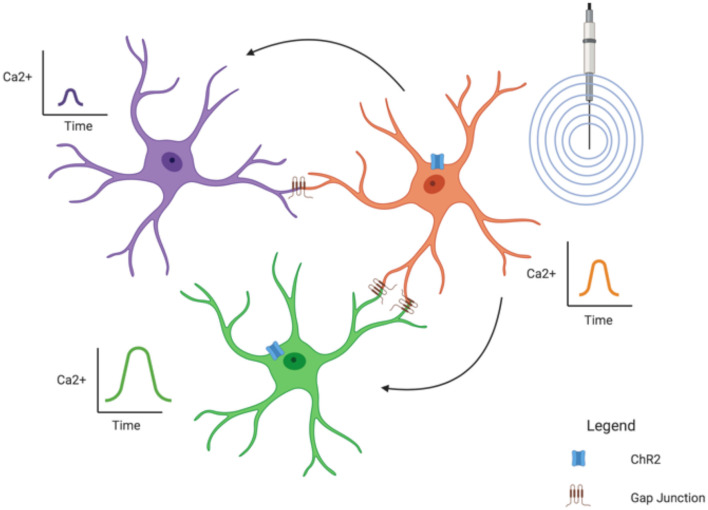Figure 3.
The glial syncytium may impact the physiological effects of optogenetics and DREADD technologies (optogenetics illustrated above). The connection of astrocytes via gap junction proteins might produce a “double stimulation” or “spillover” effect. In the diagram above, only a portion of the astrocytes (orange and green) express the opsin of interest. The green astrocyte is first stimulated following the introduction of light into the system, and then again when a neighboring astrocyte (orange) is also stimulated, generating a larger than anticipated response. In the case of “spillover,” astrocytes that do not express the opsin or DREADD in use nonetheless become “stimulated” from the activation of its neighboring astrocytes. In the image above, the purple astrocyte still exhibits a response following light stimulation despite the lack of ChR2 expression. The “stimulation” arises from the influence of the connected astrocyte (orange) that is stimulated via its ChR2 ion channels.

